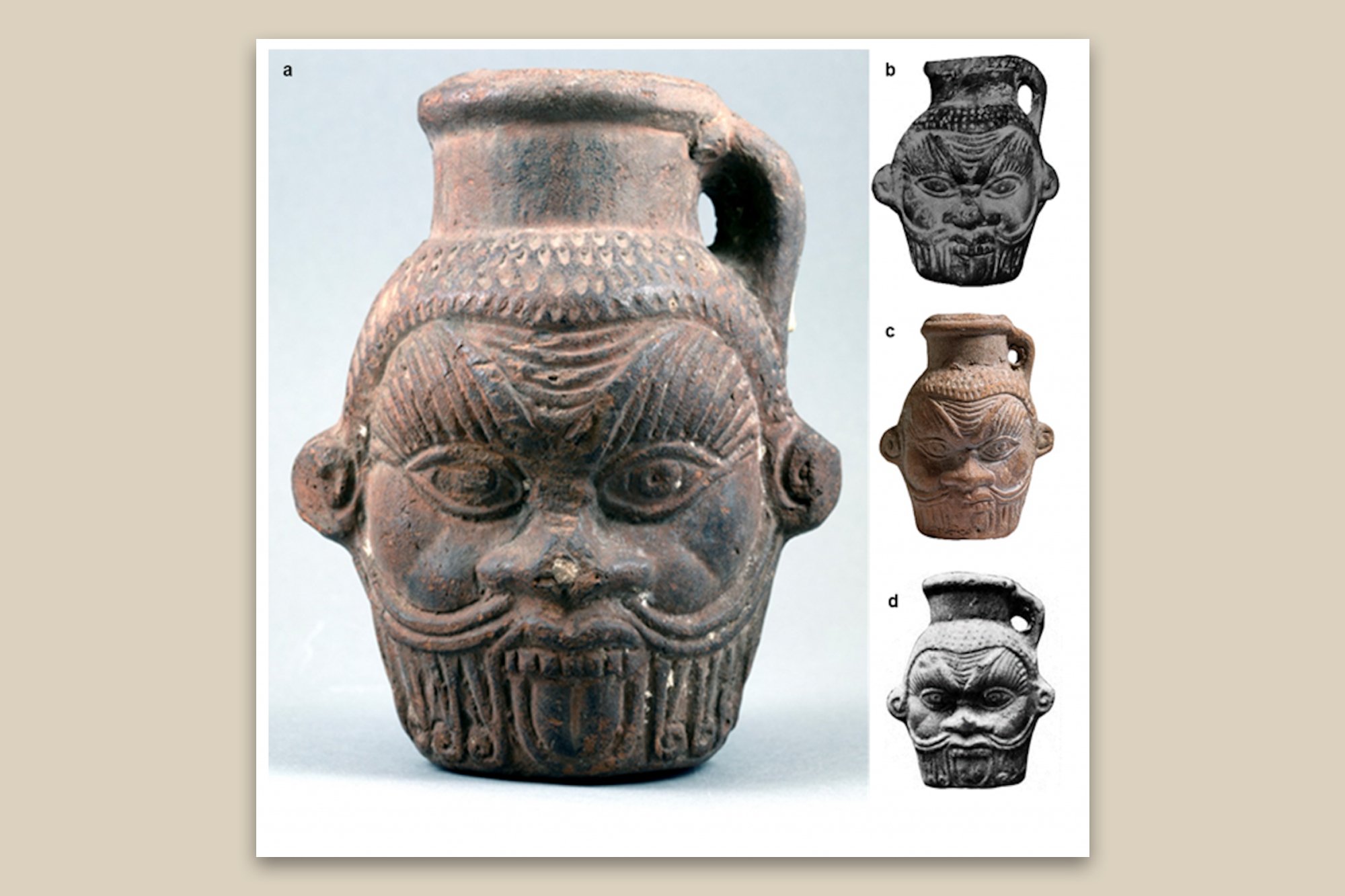
In the Myth of the Solar Eye, an ancient Egyptian story, Hathor the sky goddess has a regrettable taste for humans, and her blood thirsty instincts need to be dulled. Fortunately for mankind, Bes, the deity associated with childbirth and music, is a cunning dwarf. Bes concocts an alcoholic drink laced with drugs, disguises it as blood, and serves it to Hathor, who slips into a deep sleep. Conflict is averted… or at least postponed.
In a landmark project, researchers at the University of South Florida believe they have found evidence of ancient Egyptians reenacting this myth more than 2,000 years ago. The study centered on a palm-sized vessel in the shape of Bes’s head that belongs to the Tampa Museum of Art.
Alongside teams at the University of Trieste and the University of Milan, scientists used a range of chemical and DNA analysis processes to identify organic residues that remained inside the Bes vessel. They found wild rue, Egyptian lotus, and a plant belonging to the cleome family, all substances that have either psychotropic or medicinal properties. The seeds of wild rue, the researchers note, “produce high quantities of alkaloids […] which induce dream-like visions.”
Researchers from University of South Florida created a 3D model of the Bes vessel. Photo: courtesy USF.
The researchers also identified traces of sesame seeds, pine nuts, licorice, and grapes—a combination of ingredients that was commonly used to make a liquid appear like blood. In addition, they found human bodily fluids, such as saliva and blood. This potentially offers the final step in proving that the blood-looking hallucinogenic cocktail was drunk by people.
“We successfully identified the presence of various functional, bioactive, psychotropic, and medicinal substances,” the researchers wrote. It offers “diverse components of a liquid concoction used for ritual practices in Ptolemaic Egypt.”
The research was published in Scientific Reports on November 13. It followed an earlier version in Research Square last year that was published prior to a peer review.
Bes was an enduring presence in Egyptian religion, a god whose role shifted over time from demon to guardian. Pottery vessels made into the shape of Bes begin as far back as 16th century B.C.E. with the one in the Tampa Museum of Art’s collection dating to the Egyptian Roman era (roughly 3rd century B.C.E. to 3rd century C.E.), also known as Ptolemaic-Roman period.
This was peak Bes, a time when the god was seen as protecting the home, virility, and fertility and the production of Bes vessels duly expanded. Two decades ago, a study of 23 Bes vases found residues of animal proteins, suggesting they had been containers for milk or beef products. Most broadly, it’s been suggested head of Bes vessels served drinks such as water, milk, wine or beer.
In a world where pregnancy was fraught, Egyptologists have long suspected people brought Bes mythology to life with particular attention paid to so-called Bes Chambers at Saqqara. Now, seemingly, there’s some proof.
“We’ve found scientific proof that the Egyptian myths have some kind of truth,” lead author, Davide Tanasi said in a statement. “It helps us shed light on the poorly understood rituals that were likely carried out.”